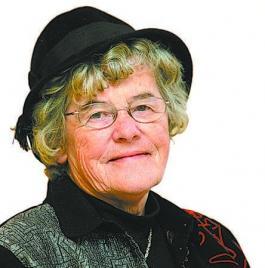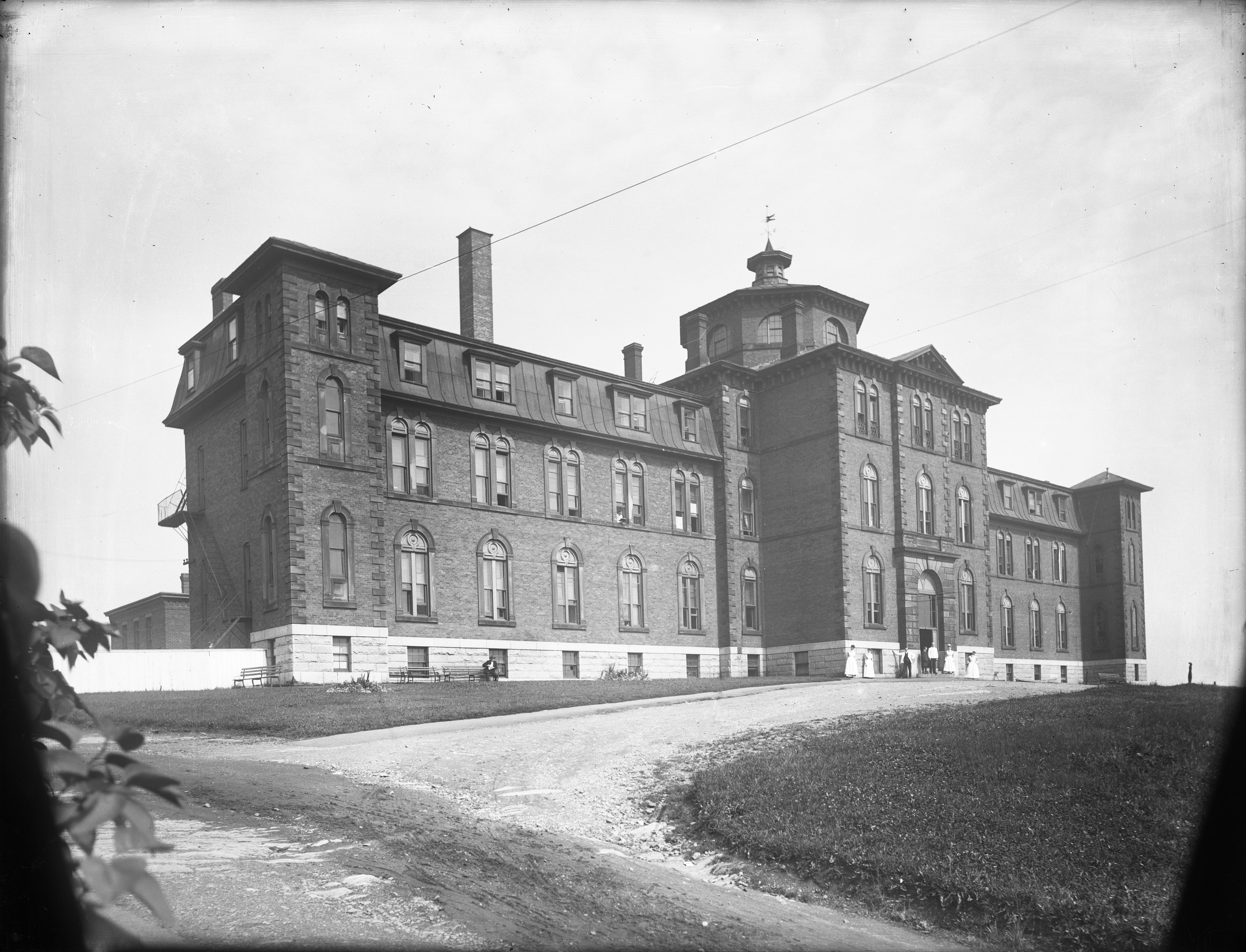
Ruby M. Cusack
The History of the General Public Hospital
in the City of Saint John, New Brunswick
by William Bayard
The General Public Hospital - Courtesy of the Provincial Archives of New Brunswick Isaac Erb fonds P210-2881
It seemed Gramís relatives were all coming to visit before the snow fell. Aunt Sadie was prepared as she had made doughnuts and chocolate cake with boiled icing and even had some left over fruit cake from last Christmas to serve with a cup of tea.
The men disappeared to the horse barn to look at the horses but I think it was an escape to get away from the depressing conversation. It would be a real upper if they talked about a happy occasion but always the conversation drifted back to those relatives who had passed. I could be certain some of the ladies would get out an embroidered hankie and wipe away a tear.
I knew what pneumonia, appendicitis, heart attack and kidney stones meant but today they spoke of Fred dying of consumption which was a new disease to me.
The oldest of the ladies, who appeared to be one who nobody argued with as she seemed to think she knew everything commenced to tell of the Saint John General Hospital and how that hospital was built in the 1860s.
Gram very softly corrected her by saying the hospital that was built in the 1860s was the Saint John Public Hospital. It was torn down and the General Hospital was built in 1930.
The old gal had fire in her eyes as she glared at Gram and retorted, ďI know my facts so donít correct meĒ. Then she picked up her shawl and purse and left the room, slamming the front door on her way out.
Quietness settled over the parlour but Gram stood her ground. She asked Sadie to bring her leather bound scrapbook and read Fredís obituary, which stated he died in the Saint John Public Hospital on June 30, 1922.
If Gram had Dr. Bayardís book, she could have really held her own with the gal who was never wrong.
Prior to the year 1865, the City and County of Saint John with a population of upwards of 30,000 possessed no hospital accommodations for the mechanic and the labourer suffering from disease and accident. The Poor House was his only refuse.
Dr. W. Bayard was the physician in charge of the Poor House and was connected with the Board of Health. He took his plea for a hospital to the press. But the rich folk, who he counted on, were not interested.
He went to Government to ask power to frame a bill to sell bonds for the sum of $50,000. Also, a tax of one dollar per year be placed upon the poll of every ratable man in the City and County of Saint John. Other expenses would be paid for by the taxes payed. The Press and Councillors were against it.
A little more than $11,000 was paid in 1860 for land to build the hospital.
The tender of James Quinton for about $26,000 was accepted and awarded to him but did not include the excavations, drainage, heating apparatus and plumbing.
Dr. Bayard did not get all the funds he sought but in June of 1865 the hospital was opened with the appointed members of the staff being: LeBaron Botsford, M.D., Glasgow; Edwin Bayard, M.D., Edinburg; T.W. Smith, M.D., Edinburg; J. T. Steeves, M.D., New York; G.E.S. Keaton, M. D., New York; W. S. Harding, M.R.C.S., England; James Sinclair, M.D., House Surgeon and Mrs. Mary Craig was appointed Matron.
Next a Hospital for Contagious Diseases was built on the Hospital Grounds.
Lady Tilley was approached to help raise funds for a Nursesí Home so the nurses would have suitable accommodations. In 1888 a Nursing School was established.
The Appendix lists the thirty-two nurses who received their diplomas after two years of training - such as: Ada Titus of Titusville, Ella Tait of Dorchester, Alice Morris of Fairville, and Laura Boyce of Fredericton.
It was not easy at the Saint John Training School for Nurses. They received six dollars a month for the first year and eight dollars a month for the second year. They received no pay for the first month and were on trial. Before entering training they were to have a seventh grade school certificate or equivalent or pass an examination.
District nurses visited the homes of those who could not afford medical care. Here they attended to their many needs and illnesses. Each nurse was expected to make ten to twelve visits in a day and return to the Nursesí Home at night.
In 1865, 135 people were admitted to the hospital with seven of them dying. By 1877 442 patients were admitted with twenty-two dying.
The hospital requested an ambulance be purchased for $385.00. Concern was for the driver if transporting a person with contagious disease but the carriage was so built there was no worry. Also there was a need to transport a person who had been seriously injured. It was suggested the ambulance be kept in the city stable and a horse and driver be furnished from there.
As you read this book published in 1896, you will learn about the health care a hundred years or more ago in Saint John. Many topics are covered including court cases, resignations, commissioners, names of doctors and much more.
The History of the General Public Hospital in the City of Saint John, New Brunswick, by William Bayard, can be read online at http://www.ourroots.ca/page.aspx?id=785585&qryID=03f959db-36dd-472b-9e7a-ae2b5674380d
|
New and Used Genealogical and Historical books of New Brunswick for sale. |
Back to Home of rubycusack dot com
